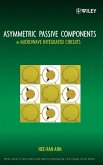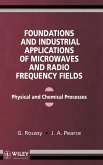This extremely well organized introduction focuses on the special interactions that occur between circuits and devices. Understanding these interactions leads to an understanding of design and performance characteristics of solid-state microwave amplifiers and oscillators. The text is presented in three roughly equal sections, with each of the first two sections laying the groundwork for the third. The first five chapters present a detailed exposition of microwave circuits, their parameters, and how they are characterized. Topics discussed include transmission lines, waveguides, microstrip lines, Smith Chart analysis, linear network parameters, resonator-transmission line coupling and filters, and more. The discussion of solid-state devices, which constitutes the second part of the book, begins with sufficient theory to understand the operating principles of the devices discussed, including: Schottky barrier diodes, microwave transistors, varactor diodes, IMPATT diodes, and Gunn diodes. The final part of the book concerns the large signal effects produced in amplifiers and oscillators when solid-state devices are embedded in microwave circuits. Extended discussions include: transistor amplifier properties; the behavior of two-terminal negative resistance amplifiers with amplitude dependent negative resistance and susceptance; stability and locking characteristics of oscillators; and fundamental noise properties of amplifiers and the phase and amplitude noise of oscillators. With its dual emphasis on linear and nonlinear characteristics and a large number of completely worked-out examples, Microwave Devices, Circuits and Their Interaction is perfectly suited as a textbook for senior orfirst-year graduate courses. It is also a valuable tool for practicing engineers and scientists who wish to increase their understanding of microwave systems.
Hinweis: Dieser Artikel kann nur an eine deutsche Lieferadresse ausgeliefert werden.
Hinweis: Dieser Artikel kann nur an eine deutsche Lieferadresse ausgeliefert werden.








